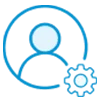Unable to find what you're searching for?
We're here to help you find itJava SE 8 Programming Ed 1 Course Overview
The Java SE 8 Programming Ed 1 course is a comprehensive guide designed to equip learners with the essential skills needed to master Java SE 8. Starting with a Java Platform Overview, students learn about platform independence and the differences between Java ME, SE, and EE, as well as Java's evolution. The course progresses through Java Syntax, Class Review, Encapsulation, Subclassing, and advanced topics such as Polymorphism, Abstract Classes, and Nested Classes.
Learners will also delve into Interfaces, Lambda Expressions, and the Collections Framework, enhancing their ability to work with data structures, streams, and filters. The course covers Exceptions, Assertions, and the new Java Date/Time API, providing a solid understanding of error handling and date/time manipulation.
Modules on I/O Fundamentals, File I/O (NIO.2), Concurrency, and the Fork-Join Framework introduce students to Java's capabilities for input/output operations and concurrent programming. The course also explores Parallel Streams, Database Applications with JDBC, and Localization, ensuring that learners are well-versed in database connectivity and internationalization.
By the end of this course, participants will have a deep understanding of Java SE 8, enabling them to develop robust and maintainable Java applications with confidence. The course is perfect for those looking to enhance their programming skills and gain a competitive edge in the ever-evolving field of software development.

Purchase This Course
| Day | Time |
|---|---|
|
to
|
to |
♱ Excluding VAT/GST
Classroom Training price is on request
You can request classroom training in any city on any date by Requesting More Information
♱ Excluding VAT/GST
Classroom Training price is on request
You can request classroom training in any city on any date by Requesting More Information

1-on-1 Training
Schedule personalized sessions based upon your availability.

Customized Training
Tailor your learning experience. Dive deeper in topics of greater interest to you.

4-Hour Sessions
Optimize learning with Koenig's 4-hour sessions, balancing knowledge retention and time constraints.

Free Demo Class
Join our training with confidence. Attend a free demo class to experience our expert trainers and get all your queries answered.
To ensure you gain the most from the Java SE 8 Programming Ed 1 course, the following are the minimum prerequisites:
These prerequisites are designed to provide a foundation upon which the course will build. They are not intended to deter any enthusiastic learners; rather, they serve to ensure that participants can comfortably keep pace with the course material and fully benefit from the advanced topics covered.
Java SE 8 Programming Ed 1 is an in-depth course designed for individuals looking to master Java development, covering core to advanced concepts.
Target Job Roles and Audience:
Gain comprehensive knowledge of Java SE 8's core programming elements, from fundamental syntax to advanced features like lambdas and JDBC, ensuring proficiency in Java application development.

